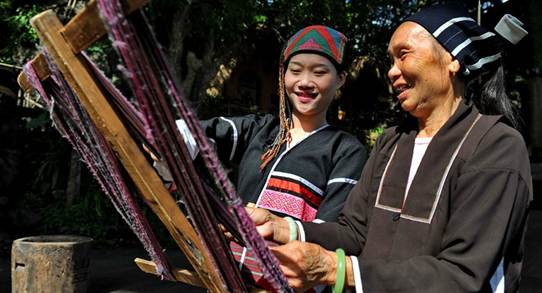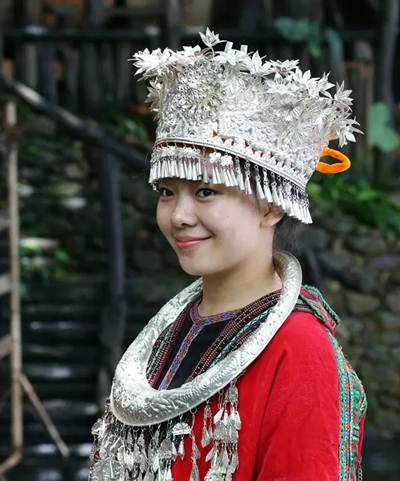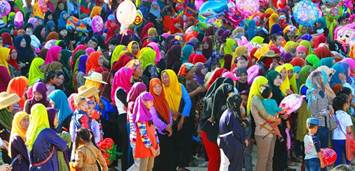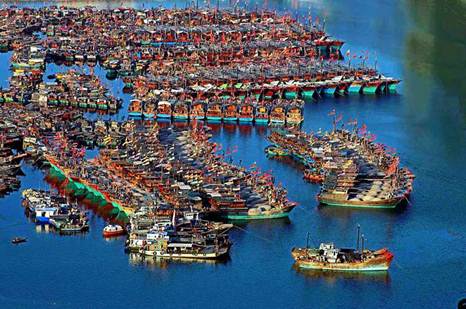One of the most fascinating aspects of Hainan Island are its ethnic minority groups, the original inhabitants who have lived here, relatively undisturbed, for thousands of years. Their culture, customs, and way of life remain largely intact, especially if you venture into the mountainous heartland of the island.
The Li
The largest of the ethnic minority groups on Hainan Island, the Li have distinctive culture and customs, as well as speak their own language (Hlai), which is related to languages spoken in other parts of South East Asia, such as Thai and Lao.
The Li are thought to be the first people to have settled in Hainan, coming originally from the southern provinces of mainland China, particularly Guangxi, about 3,000 years ago.

They currently have a population that numbers about 1.14 million.
Li communities are spread throughout the southern half of Hainan Island in both mountainous and lowland areas. There are five distinct branches of the Li – Ha, Qi, Run, Sai, and Meifu, each differentiated by geographic location and variations in language and dress.
Li women are known for their weaving skills and are credited with developing the earliest weaving technology in China.
The resulting cloth/brocade is colourful and intricate, being commonly used to make the traditional clothing worn by the Li people, which they usually only wear today for festivals and ceremonies, such as weddings.
The Li have a vibrant tradition of music and dancing, again mainly seen during times of celebration. Performances of Li music and dance can be seen at many of the tourist sites around Sanya, such as Bing Lang Valley and Yanoda.
Their traditional houses, which are quite rare nowadays, are boat-shaped, with thatched roofs.
The Miao
The Miao ethnic group are found throughout the southwestern provinces of China, as well as in Vietnam, Thailand, and Laos, where they are known as Hmong.
The Hainan Miao were originally soldiers sent from Guangxi during the Ming Dynasty(1368-1644).
Their current population stands at about 60,000.

Separation from their mainland counterparts has brought about differences in language, culture, and dress.
The Miao primarily live in the mountainous region around Baoting and Wuzhishan.
The have their own festivals, customs, and traditional clothing, characterized by the lavish use of silver ornaments in their headwear and clothing.
The Hui
Although designated as Hui due to their Muslim religion, these people are more accurately known as Utsuls (Muslim Chams), as they are thought to have originally come from the ancient kingdom of Champa, in what is now central Vietnam.
They were permitted to settle in Hainan after being driven from Champa by the southward expansion of the Vietnamese state in the 1470s.
They have a unique language, related to Malay and Polynesian languages, but modified over the years to become tonal, possibly due to exposure to the Chinese language.

Although once more widely dispersed across the island, the Hainan Hui population is now centred around the area of Phoenix Town, close to Sanya’s airport, and numbers about 8,300 people.
The Hainan Hui are Sunni Muslims and observe the traditions of Islam, such as Ramadan and the festival of Eid (Hari Raya Puasa).
The Dan
Whilst not officially recognized as a minority group, the Dan nonetheless have a very distinct and interesting culture.
The Dan are fishermen, and their communities are dotted along the coast of the island, which are easily spotted as they are built entirely on water. In the past many Dan lived their whole lives on boats and floating houses, never setting foot on land.

There are communities of the Dan all over Southern China and the one near Sanya is one of the larger ones.
In the Sanya area, they often operate restaurants in their boats and houses, with customers ferried over from the shore.